Salamanca is a lovely historic town situated approximately 2 hours west of Madrid. Much of its fame stems from the eponymous University of Salamanca, which at 800 years old is one of the oldest in the world. The town itself also features various historical buildings which are also a must see if you’re into history.
As part of summer travels in 2017, I visited my friend who was studying in Salamanca. It wasn’t just a reason to visit a new place, but also a great excuse to try out Spain’s high speed train services.
First posted 16 June 2017. Updated 28 February 2023.
Buying my tickets
The Spanish rail network is primarily operated by Renfe Operadora, the state rail company. I bought my single journey Standard Class ticket from Renfe’s website for €19.95.
2023 Update: Renfe no longer has a monopoly on domestic passenger services in Spain. Newcomers Ouigo España and Iryo now offer high speed services on Spanish tracks following the liberalisation of the rail network in 2020.
During the booking process, I noticed Renfe selling tickets for a service that would take only 1 hour and 45 minutes to complete, as opposed to the rest that would take close to 3 hours. This was the ticket I purchased since I wanted more time on the ground in Salamanca. I would later discover that my ticket was for the faster Alvia service, which is a high speed regional service running partially on the high speed tracks, whereas the other trains were MD (Media Distencia) services, which are regional trains serving more stops than the Alvia trains.
Alvia trains are a step below the flagship AVE high speed services, as Alvia trains run on both high speed standard gauge lines and the slower legacy Iberian gauge lines. This is achieved by running the train through a gauge change facility after a run on the high speed tracks. By doing so, Renfe manages to bring high speed services to medium sized cities with train stations on the legacy network without having to build expensive new stations and high speed tracks. Salamanca, for example, lies on a legacy single track Iberian gauge line.
I noticed that my PDF ticket had the mark “Plaza: 123″. This changed to Asiento when I imported my ticket to Apple Passbook (now Apple Wallet). As it turns out, this was my automatically allocated seat number, which did baffle me somewhat as I had been searching for the seat reservation function in vain when buying my tickets. I hope Renfe has made their website less confusing since then.
Departure experience from Estación de Madrid-Chamartín
Madrid is served by 2 main stations – Madrid Atocha and Madrid Chamartín. While Atocha is Madrid’s “main” station, both stations are still equally busy as they host a large amount of regional trains daily. Atocha seems to host most of the high speed AVE trains, while Chamartín handles mostly ordinary regional services. My train was scheduled to depart from Madrid-Chamartín.
Getting to Madrid-Chamartín via Madrid Metro
Madrid-Chamartín is connected to Line 1 and Line 10 of the Madrid Metro. My journey started at Santo Domingo station on Line 2, and required a transfer at Cuatro Caminos to Line 1 for Chamartín.
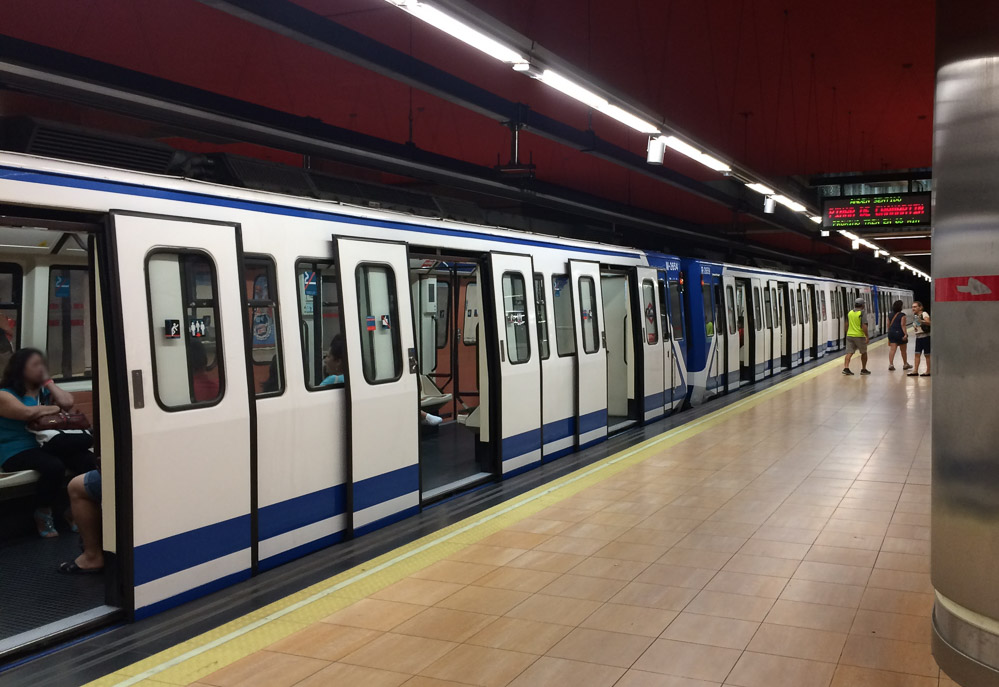
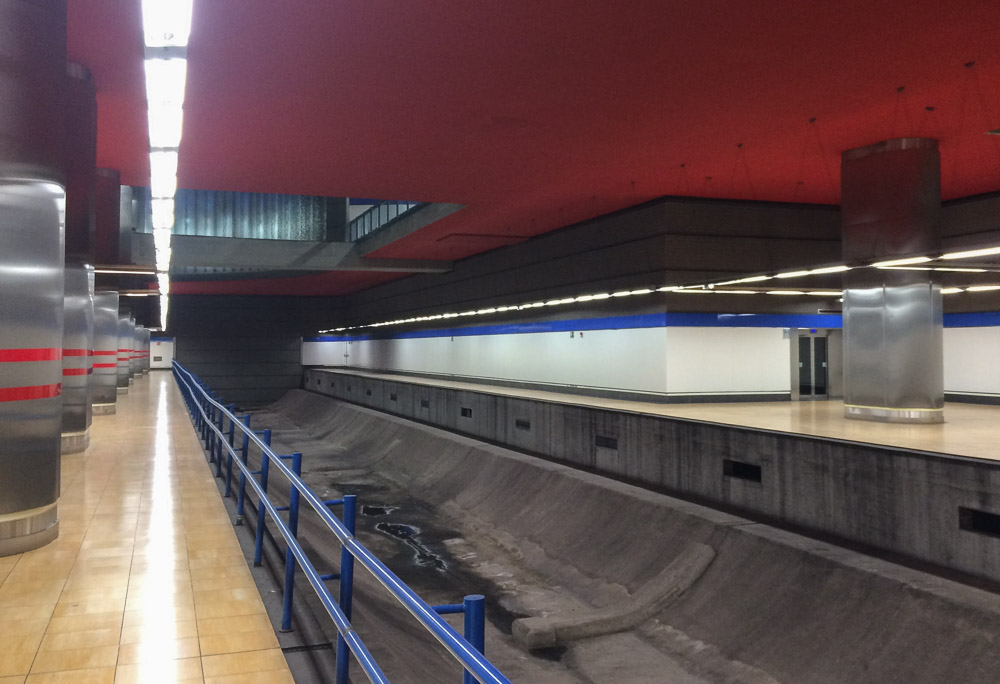
Madrid Metro seems to have been built for the future, as Chamartín’s Metro station features a fully built Metro platform minus the tracks, evidently for a planned future line.
Navigating Madrid-Chamartín
Access to the rail station itself from the Metro station requires navigating a few escalators and stairs, but the signs are easy enough to follow. You will soon find yourself in the station’s concourse level.
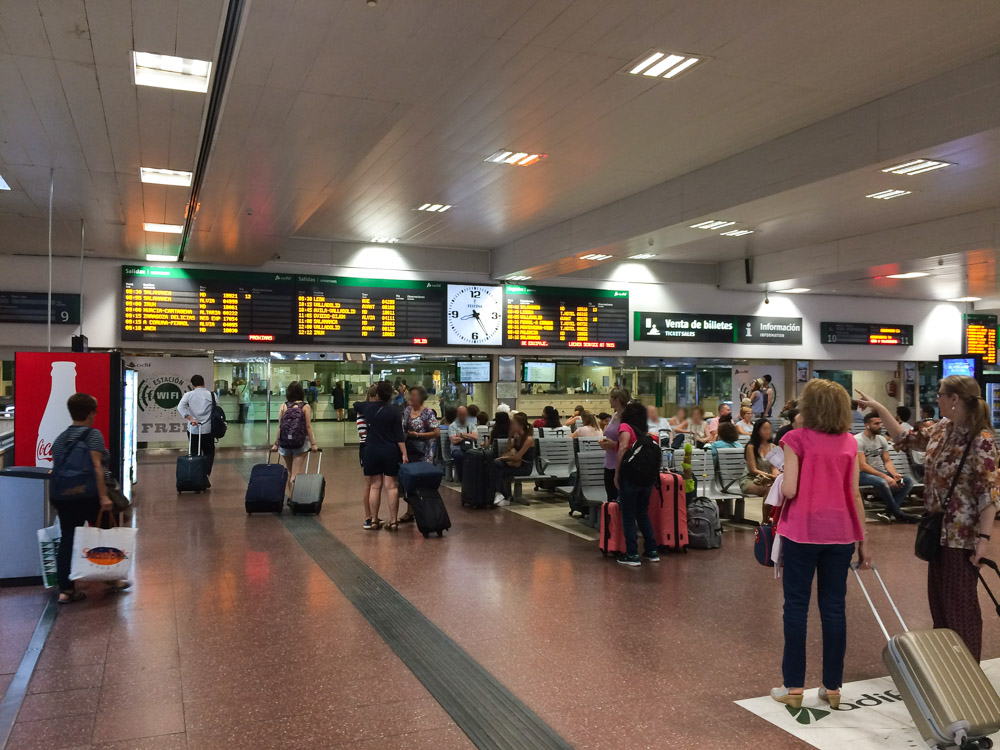
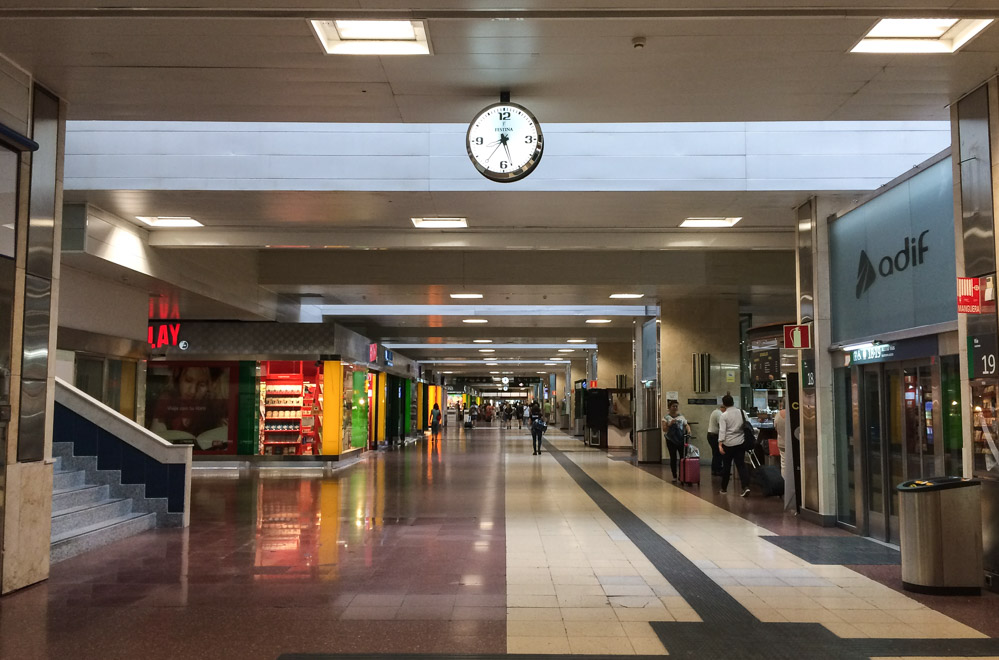
Departure platforms aren’t usually announced until around 10-20 minutes before departure, so just grab a seat in front of the large boards until it shows up.
Boarding the Alvia 4899 service
Once the platform number shows up, simply join your fellow passengers heading down to the platform. Note that there is a security check on the platform, where your ticket’s barcode will be scanned and your bags x-rayed. The whole process was pretty fast and soon I was onboard.
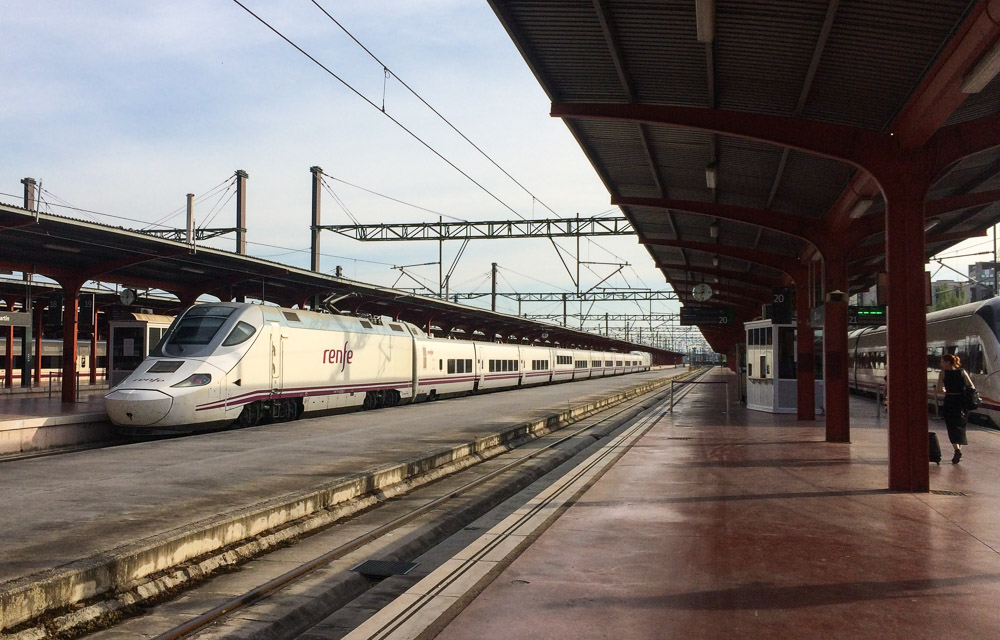
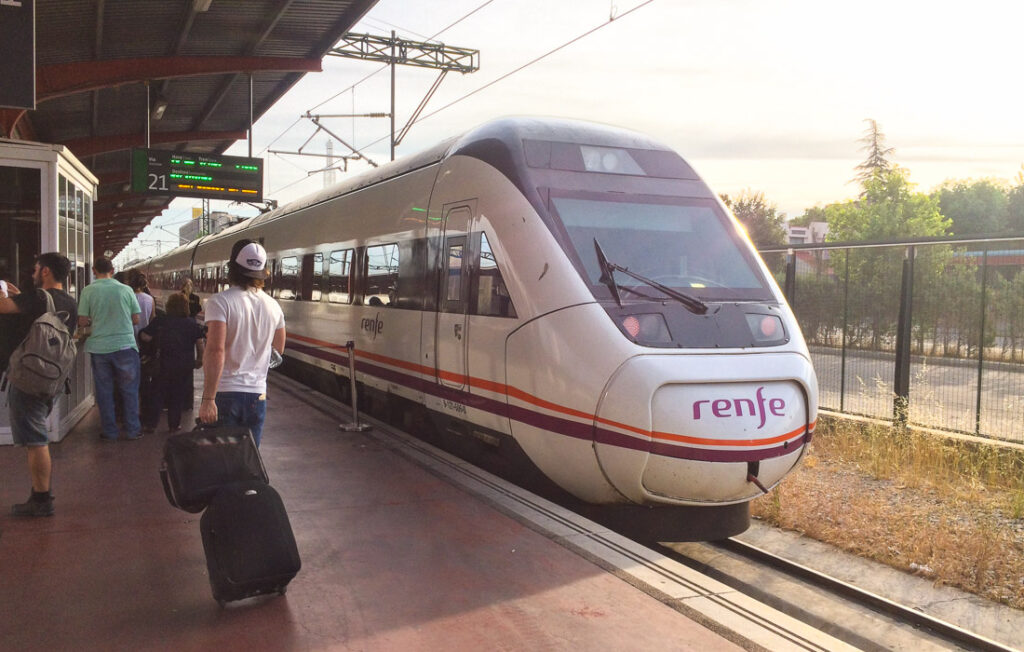
Fun note: If you're a rail enthusiast you might want to look out for one of the Talgo trains nicknamed Patitos (duck), so named due to the design of its nose.
We departed on time and were soon speeding out of Madrid. The ride quality was extremely smooth and comfortable.
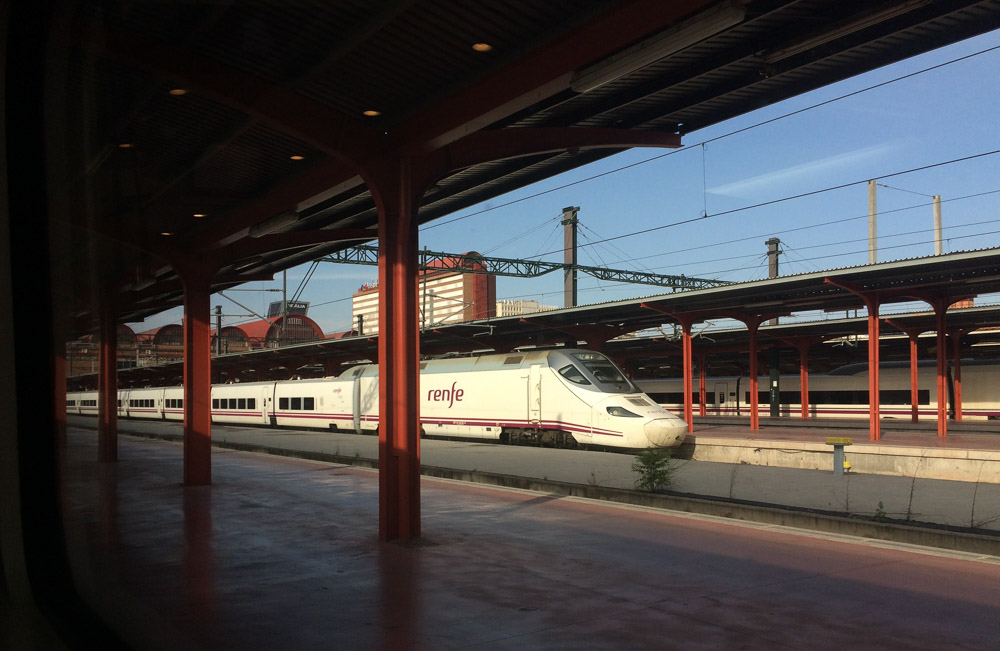
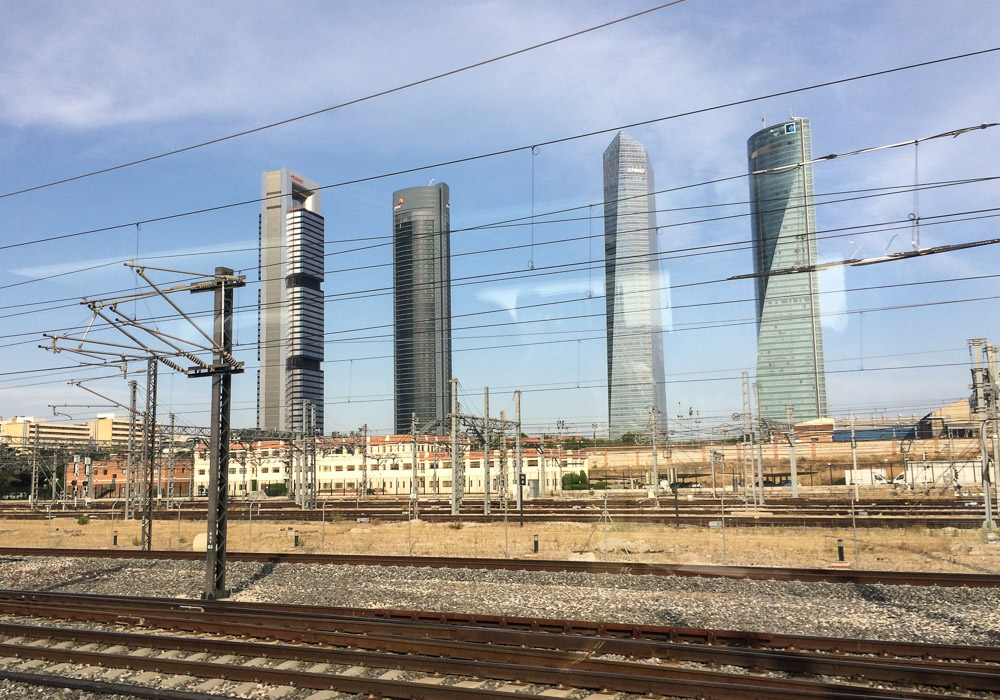
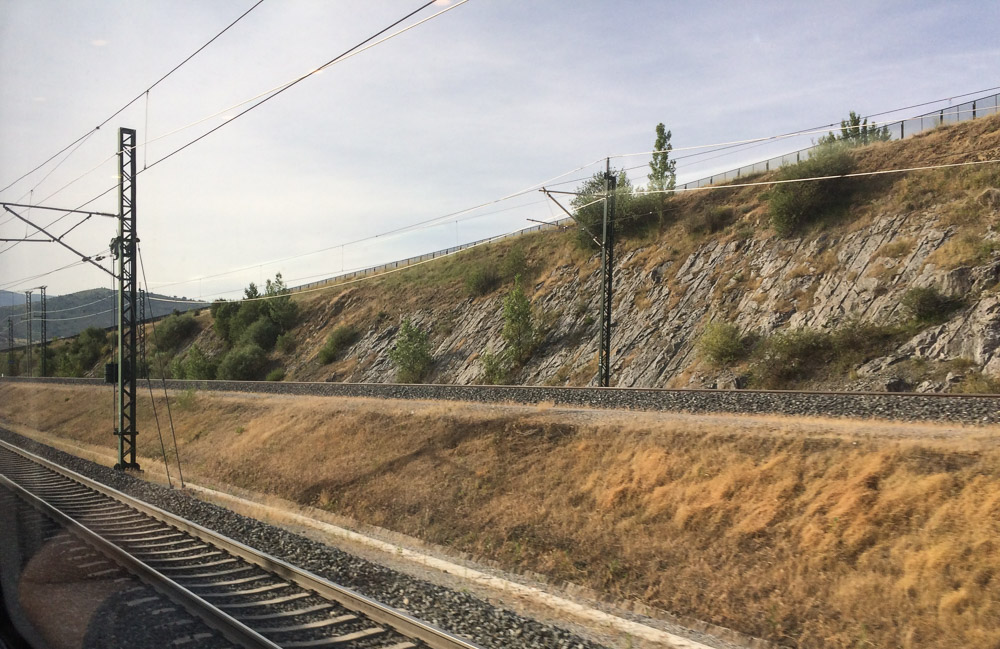
This train and line was built for speed, and we were soon speeding through the outskirts of the northern Madrid urban area on the high speed tracks.
Cabin & Onboard Amenities
The Standard Class interior was well designed and had an early-2000s vibe to them, which reminded me of the Siemens ERL trains serving KLIA back home. The interior isn’t on par with the newer high speed trains I’ve been on, but you’d have to really nitpick to consider that a problem.
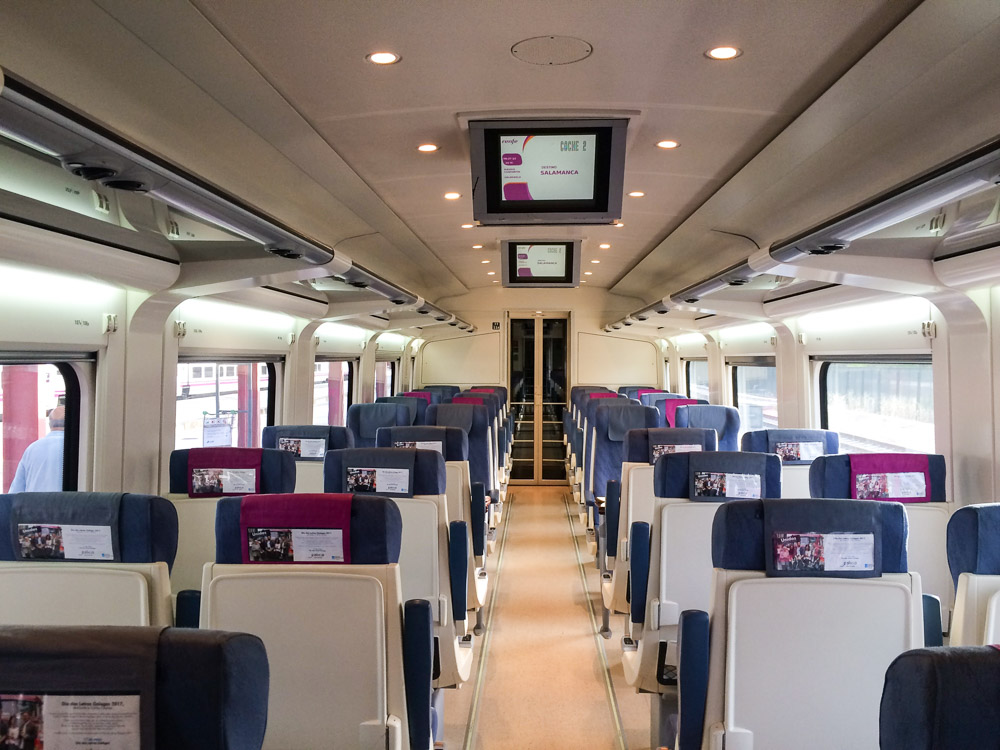
Renfe’s Standard Class is outfitted with non-reclinable seats in a 2-2 layout. Seats are arranged facing the middle of the train, meeting at a bay of 4 seats with a fixed table.
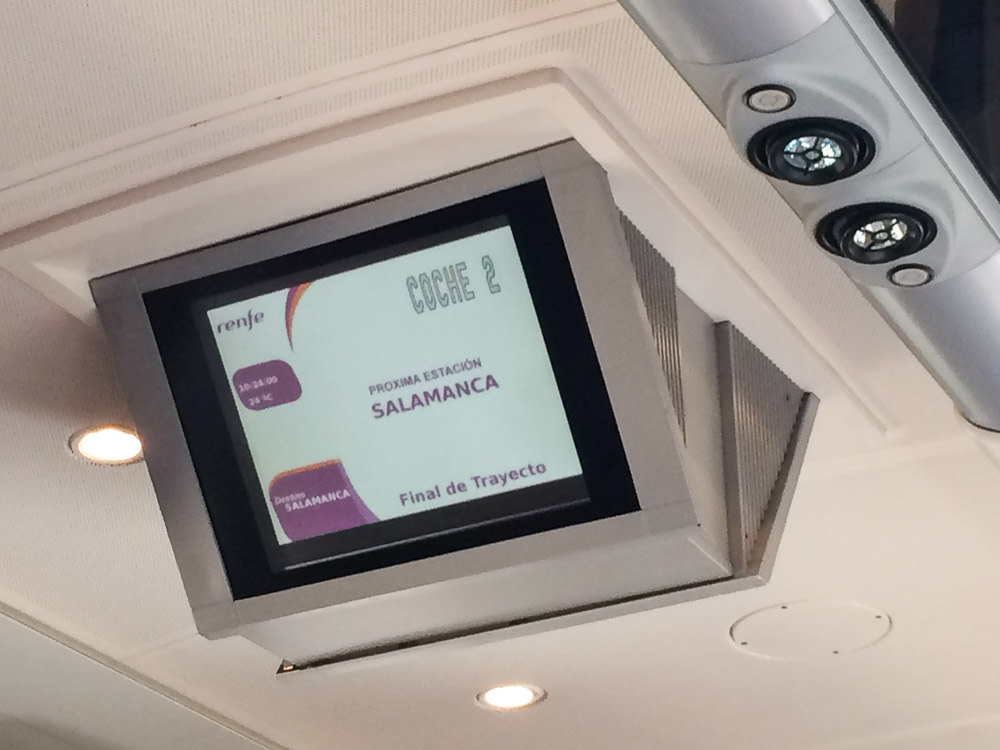
There are screens in each carriage showing you the next stations and the final stations of the scheduled service. In my case the train would stop only at one station between Madrid and Salamanca.
The view outside
Countryside flanked the train for most of the ride save for some short tunnels through small hills. It got repetitive after a while and I turned to my book for entertainment. It was the first installment in the A Song of Ice and Fire series (Game of Thrones for the TV folks), and the scenery outside kept bringing visions of Vaes Dothtrak and Dorne to my mind.
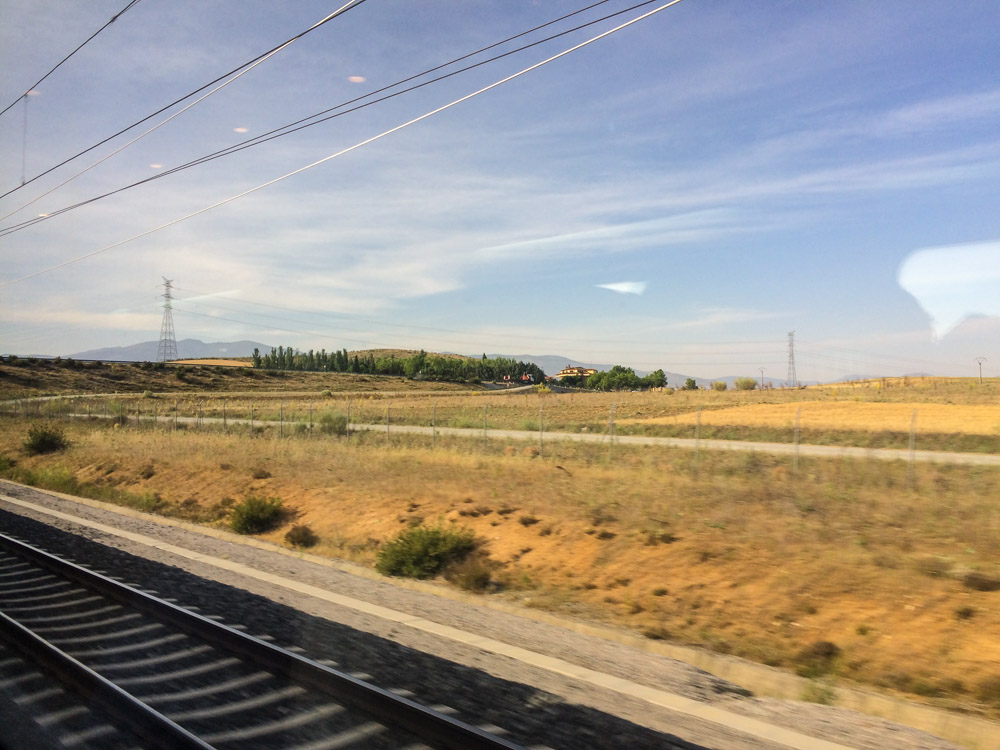
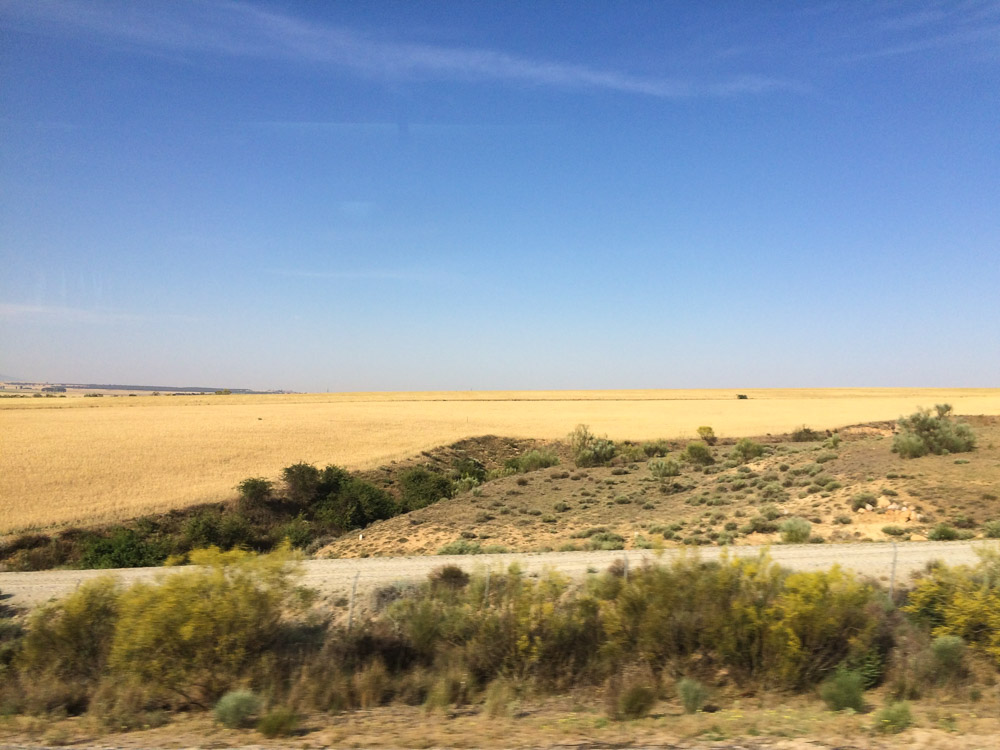
After hitting a consistent > 200km/h over a distance, we eventually slowed to a crawl and passed through a shed situated over the rails. I quickly figured out that this was the gauge change facility, where the train bogies would automatically convert to the new gauge’s measurements as it passed through.
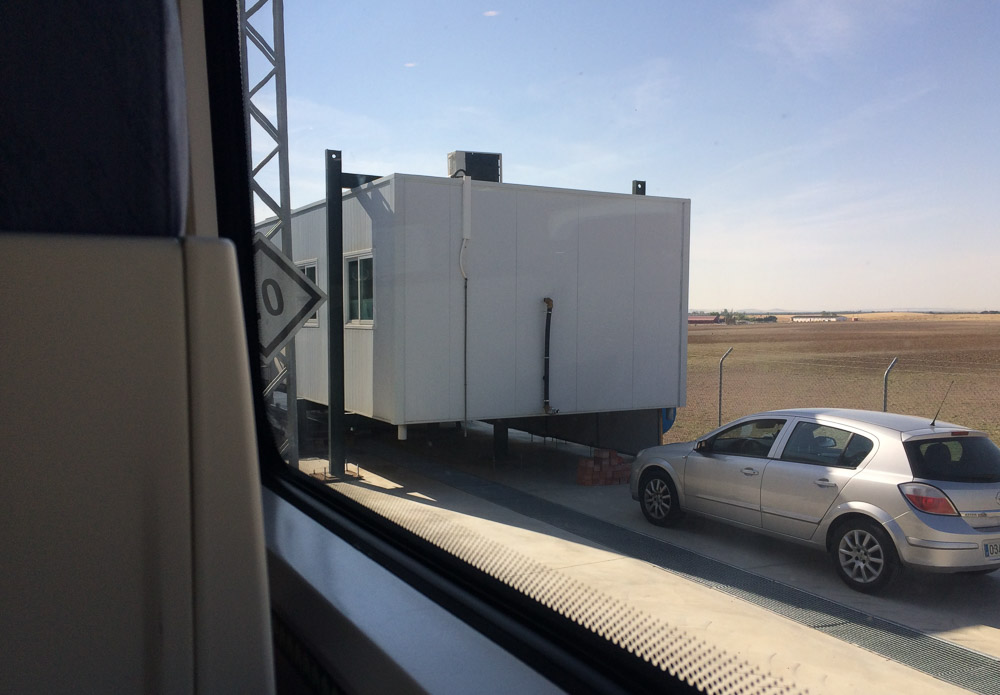
This differed from normal gauge change procedures where the bogies would first be removed completely from the carriage, and new bogies installed with the correct gauge set.
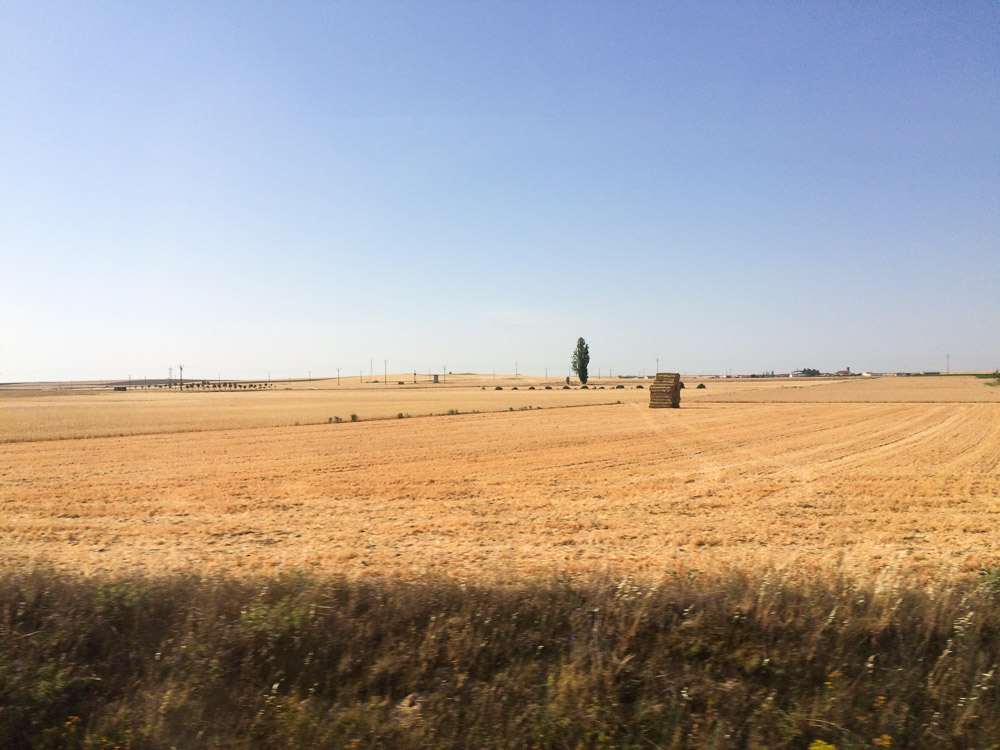
The journey from then on continued on the Iberian gauge at a slightly slower speed with a bit more bump as well. I returned to my book and immersed myself in the Seven Kingdoms as the sun-baked countryside zoomed past outside.
Arrival at Estacíon de Salamanca
It was eventually announced that we were approaching Salamanca. Our train slowed and entered the station, passing an idling locomotive and another Alvia EMU.
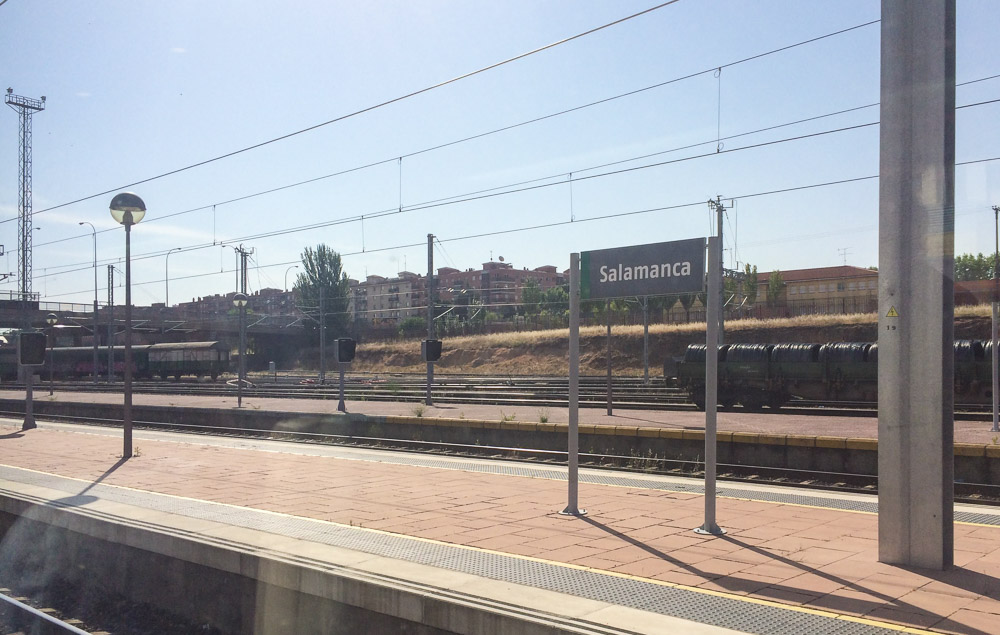
Brakes were applied, and this short ride came to an end with the passengers exiting through the doors on the right.
Final Thoughts
It was a very pleasant ride on the Alvia service, and one that I would gladly repeat again if I had the chance to.
Between the bus and the train, I’d definitely take the train anytime.
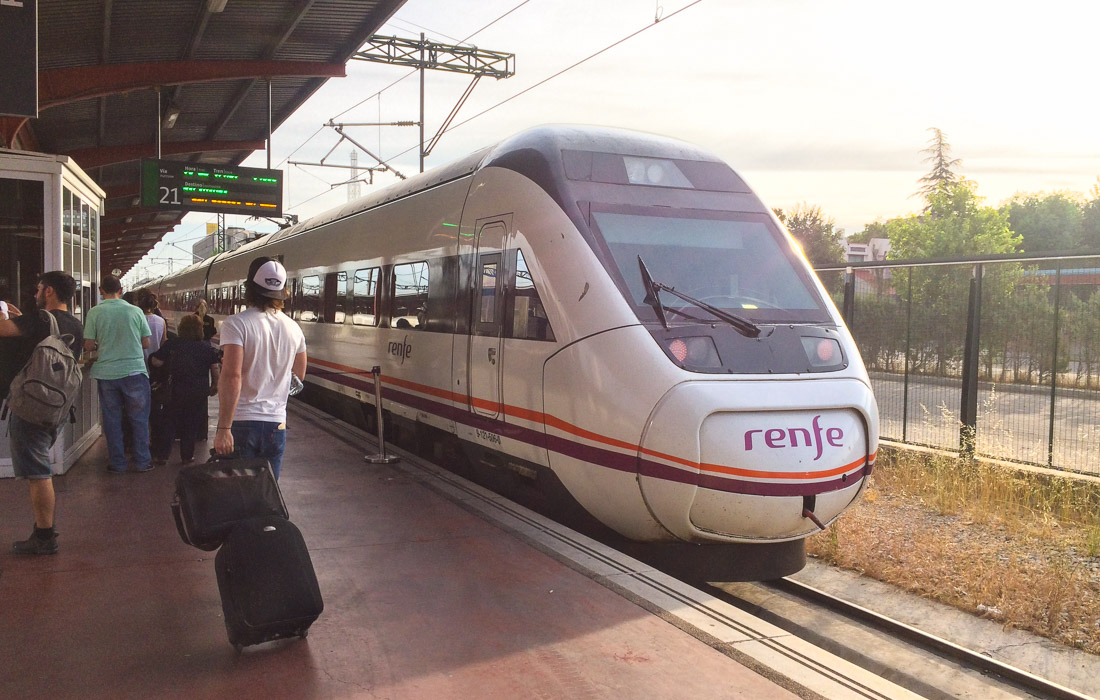
Leave a Reply